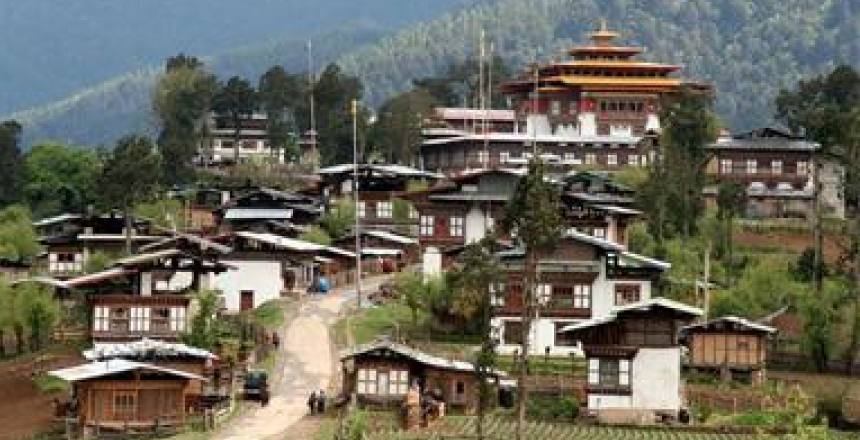Bhutan Culture Tours-10 Days
- Destination: Bhutan
- Accommodation: 3 Star (or greater) Hotel
- Transportation: Private Car
- Min Pax: 1 Pax
- Trip Style:Sightseeing
- Meals:Breakfast + Dinner
Bhutan Culture Tours-10 Days
Outline itinerary
Day 01:Arrive Paro – Thimphu
Day 02:Thimphu
Day 03:Thimphu – Punakha
Day 04:Punakha - Trongsa
Day 05:Trongsa – Bumthang
Day 06:Bumthang – Gangtey
Day 07:Gangtay - Paro.
Day 08:Paro
Day 09:Paro
Day 10:Paro Departure
Cost includes:
- Accommodation under twin sharing with breakfast.
- Lunch and Dinner in local restaurants and hotels.
- Experienced English Speaking Tour Guide licensed by Tourism Council of Bhutan.
- Private transport within Bhutan (Toyota coach / Tucson / Santafe / Land cruiser / Prado) as per itinerary.
- Museum & Monuments entrance fee.
- Bottled water during the tour.
- Government Royalty.
- Tourism Development Fund of US$10 per person
Cost Excludes:
- Visa Fee of US$40 per person
- Air ticket(flight fare) both International and Domestic
- Bank fee of US$30 only
- Travel Insurance.
- Gratuities, bar bills, telephone bills, personal expenses, and laundry.
Detail Itinerary
-
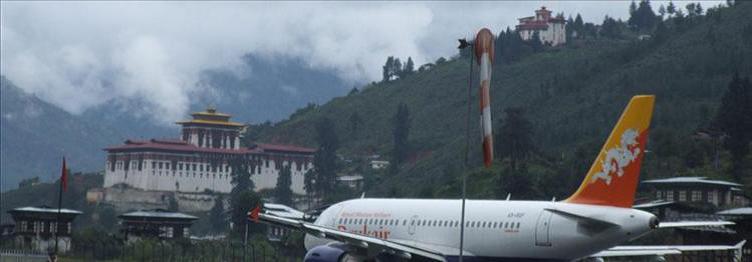 Day 1
Day 1Arrive Paro – Thimphu
After arriving & visa formalities and collection of baggage, you will be welcomed by our tour representative who will be your tour guide during your entire trip in Bhutan. Check into your hotel in Thimphu. Free until lunch time for some rest from early morning flight, refreshment and lunch.
Afternoon, you can choose to visit any or all of the following places:-
Tachogang Lhakhang
Tachogang Lhakhang is located in Paro district, on the way to Thimphu. It was founded by Thankthong Gyelpo after he experienced a vision of Guru Rimpochhe, Amitaba and Avalokiteshvara near site. The caretakers today are said to be descendants of Thangtong Gyelpo. Inside the temple one can see the master’s relics, including his walking stick.
Tashichho Dzong
The Tashichho Dzong is a Buddhist monastery cum fortress at the northern edge of Thimpu the capital city of Bhutan. The Dzong was built on the western bank of the river Wang Chu, and has historically served at the seat of the DrukDesi or the Dharma Raja of Bhutan’s government. After the kings assumed power in 1907 this post was combined with that of the king and Thimphu severed as the summer capital of the kingdom before becoming the full time capital of Bhutan.
-
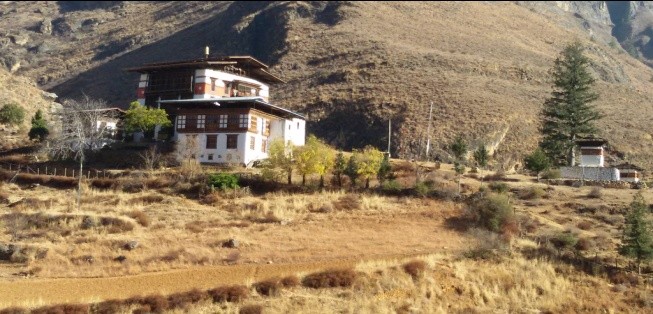 Day 2
Day 2Thimphu
After the breakfast we will drive to following places:
Kuensel Phodrang
The Kuensel Phodrang or the Buddha point is the world’s largest sitting Buddha statue, the statue is 167 feet high. The statue is situated on top of a hill overlooking the city of Timphu; it can be accessed by road and is about 15 minutes away from the city’s center. The word Kuensel means everything is clear and from this place you will sure enjoy a great view of the Thimphu Valley on both sides. The statute will house a temple inside it, the statue and its adjoining car park and recreational center.
National Memorial Chorten
The National Memorial was built by Bhutan's third king, H.M. Jigme Dorji Wangchuck who is also known as the "father of modern Bhutan." He wanted to erect a monument carrying the message of world peace and prosperity. However, he was unable to give shape to his idea in his lifetime due to pressures of state and other regal responsibilities.
Motithang Takin Preserve
The Motithang Takin Preserve also known as the Thimphu Zoo by many is a small natural preserve for the Takin Bhutan’s national animal. It was originally a mini zoo, but it was converted in a preserve later on as the Takin. The mini zoo contained a small number of Takin but the King of Bhutan later decreed that it was improper for a Buddhist nation to keep an animal in captivity. -
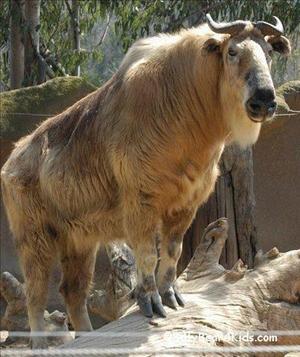 Day 3
Day 3Thimphu – Punakha
Post early breakfast, you will drive towards Punakha via Dochula Pass. We will stop over for tea at Dochula (3,100 m), where on a sunny day; you can get stunning views of the Himalayan ranges. The Dochu La Pass is probably the best known mountain pass in Bhutan. Located at an altitude of 3150 meter above sea level, the Dochu La Pass is about 30 kilometer away from the capital city Thimphu and the road to Punakha. On a clear day the pass offers visitors a spectacular view of the majestic eastern Himalayan Ranges.
Punakha Dzong
The Punakha Dzong or the Pungtang Dechen Phortang Dzong is located at the confluence of the Mo Chhu and the Po Chhu River, combine to form the Puna Tsang Chu which in turn is a tributary of the mighty Brahmaputra River. The Dzhong was constructed by Zhabdrung Ngawang Namgyal Wangchuck in 1638. -
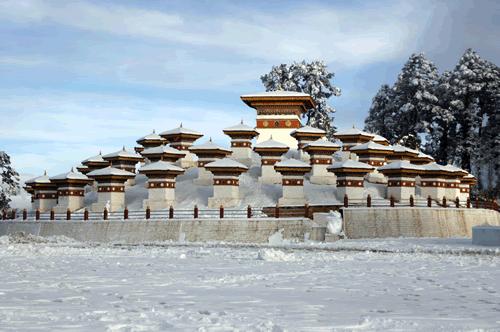 Day 4
Day 4Punakha - Trongsa
After an early breakfast, we will be driving down to Trongsa. Admire the view en route the valley of Wangdiphodrang. We will drive to Chimmi Lhakhang to start with. The Chimi Lhakang or the Chimel Lhakang is a Bhuddhist monastery located in the Punakha District of Bhutan. The monastery stands on a small hill close to the village of Lobesa and was constructed in 1499 by Ngawang Choegyel, the 14thDrukpaheirarch.
Chendebji Chorten
Located 2 kilometers away from the village of Chendebji is the Chendebji Chorten, a large Buddhist Stupa. The Chendebji Chorten is a large white structure built in likeness to the famous Boudhnath Stupa located in Kathmandu in Nepal. The Chorten was constructed by Lama Shinda from Tibet in the 19th century AD. The Stupa is believed to have been constructed at a spot where an evil spirit was subdued by the Lama.
Trongsa Dzong
The Trongsa Dzong or the Cheokhor Rabdentse is one of the largest and most impressive
Dzong in Bhutan. The Dzong is located on a cliff overlooking the Mangde Chu river gorge. The Dzong was built at the site of a temple that was constructed in 1543, by a Drukpa Lama. This huge multi-level fortress comprises of a series of courtyards and passageways that are built along the topography of the ridge. -
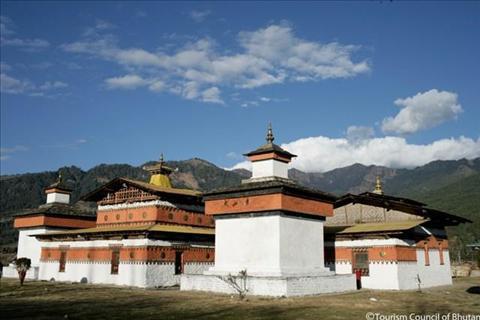 Day 5
Day 5Trongsa – Bumthang
After morning breakfast, we will drive towards Bumthang and visit Jakar Dzong. The Jakar Dzong is situated above the Jakar village in the Chamkhar valley of Bumthang. The Dzhong was originally a site of a monastery that was being constructed at the time of Lama Ngagi Wanchuck’s visit to Bhutan. According to legend during the construction of the Dzong a white bird emerged from the structure and perched itself on the site. In Bhutanese culture a white bird is considered to be auspicious.
Jambay Lhakhang.
Jambay Lhakhang was built by King Srongsen Gampo of Tibet in 659 AD. The temple was blessed by Guru Rimpoche during his visit to Bumthang. It is said that Guru Rimpoche was the one who brought Buddhism to Bhutan. It was renovated by Sindhu Raja after Guru Rimpoche restored his life with his magical powers. Many believe that there is a natural lake under the temple in which Guru Rimpoche took refuge on several occasions.
Kurjey Lhakhang
The Kurjey Lhakhang is a monastery located in the Bumthang Valley of Bhutan. The Kurjey Lakahng Temple Complex is a 30 minute hike from the Jambay Lhakhang temple. According to legend Sendhu Raja, the King of Bumthang was very ill and invited Guru Rinpoche the founder of Buddhism in Bhutan to give him a cure for his ailment.
Namkhe nyingpo goemba:
Namkhe Nyingpo Goemba is located on a hill just east of the town of Jakar, the administrative center of the Bumthang district. The monastery was established in 1970 and is home to about 300 monks who are learning about the Nyingampa Buddhism. -
 Day 6
Day 6Bumthang – Gangtey
After breakfast you will drive to Gangtey and visit Gangtey Goemba. The Gangtey Monastery or the Gangtey Goempa is an important monastery / temple associate with the Nyingmapa school of Buddhism. The Monastery is Located in the Wandue Phodrang Dzhongkhag in central Bhutan. The Gangtey Monastery is situating in the picturesque Phobjikha Valley, which is also renowned for being the winter home of the rare Tibetan Black Necked Cranes. The monastery was established in 1613 by Peling Gyalse Rinpoche, the grandson of Trenton Pema Lingpa the great treasurer discoverer.
Phobjikha valley
The Phobjikha is a wide glacial valley located in close to the Gangtey Monastery. The Phobjikha valley is the winter home of the rare Black Necked Cranes that migrate from Tibet from the arid plains of Tibet to roost in the more comfortable climate of the Phobjikha Valley. The valley is at an altitude of 2900 meters above sea level and experiences a much lighter winter as compared to the harsh extremes of Tibet. -
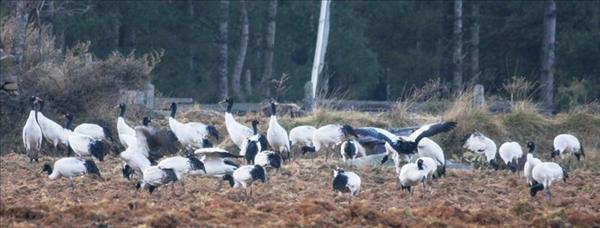 Day 7
Day 7Gangtay - Paro.
After early morning breakfast, you will drive to Paro and on the way, we will visit:-
Simtokha Dzong
The Simtokha Dzong is a small Dzong located approximately 5 kilometers south of Thimphu. The Dzong is officially called the Sangak Zabhon Phodrang which roughly translates to the Palace of the Profound Meaning of Secret Mantras. The Simthoka Dzong is said to be the first fortress to have been built by the legendary Shabdrung Ngawang Namgyal in Bhutan. Later drive to Paro, -
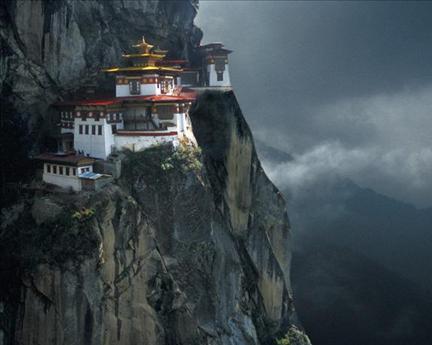 Day 8
Day 8Paro
After early morning breakfast, we will take you for a morning hike up to Taktsang Monastery, also known as ‘Tiger’s Nest’. Hanging precariously and magically from a rather steep cliff, the Taktshang monastery is a monument of genuine pride for the Bhutanese nation. It defies architectural principles to the core and amazes tourists from around the world. It is a sight to behold.
Kyichu Lhakhang
The Jowo Temple of Kyichu is one of the oldest temples in Bhutan. The temple was built by the Tibetan King Songsten Gampo in the 7th Century AD. The Kyichu Lhakhang was one of the 108 temples constructed by him to subdue a demon that was terrorizing the people of the Himalayas.
The Lhakahng underwent many extensions during the ages with the last one being carried out in 1965 by the Queen Mother Ashi Kezang Choden Wangchuck. -
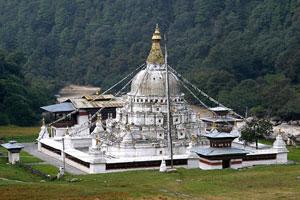 Day 9
Day 9Paro
After a breakfast we will visit the following places:
Dumtse lhakang
The Dumtse lhakhang Temple is located just north of the city of Paro. The Dumtse Lhabhang temple is very unique in its design as it’s designed like a Chorten (Stupa), which is highly unlike any guide other Lhakhang / temple in Bhutan. The Temple was built in the 1443 AD by Thantong Gyalpo, known as the iron bridge builder in Bhutanese legend. The Dumatse Lhakhang is built over 3 levels that represent the 3 spiritual realms of earth i.e. Hell, Earth and Heaven. The walls of theDumtse Lhakhang are decorated in beautiful hand-painted murals that depict these 3 realms of earth.
To visit the Dumtse Lhakahng tourists require a special permit that has to be obtained in advance, we recommend that you ask your Bhutan Travel Agent to apply for the same if you wish to visit the temple before you depart from your home country. Another thing that BhutanTravelAgency.com recommends is that you must carry a flashlight with you while visiting the temple. The inner reaches of the temple are very dark and only illuminated by a few butter lamps and the odd small window.
Rimpung Dzhong
The Paro Dzhong is probably Bhutan's best known and most iconic Dzhong. This is probably the first building you will notice when you land at Paro International Airport and will probably be your first memory of Bhutan.
The imposing Dzhong is perhaps the finest example of Dzhong architecture in the world today, the massive buttered walls of the fortress dominates over the valley. The Rinpung Dzhong's names translate to the “Fortress on a heap of Jewels ". In evening we will visit local market of Paro and overnight in a hotel in Paro. -
 Day 10
Day 10Paro Departure
In the morning after early breakfast we will see you off at the Paro Airport for your onward destinations.
Trip Note
GENERAL REMARKS:
- The cost of air tickets is subject to change without prior notice by the airlines.
- The extra supplement will be charged if the rooms are to be upgraded.
- The complete tour payment must be made no later than one month prior to your trip in US$ as per the wire payment instructions. This is to ensure that we secure visas, hotel reservations, transportation, and guides.
- The complete flight payment must be made before the expiry date of the flight reservation done on behalf of you. You have the flexibility to send either both the payment together or the trip payment later.
Our Tour Cancellation Policy:
- Please note that the cancellation of your tour is subject to the following cancellation charges.
Within 30 days of the start of the tour program – Free
|
a) |
Within 25 days |
- 10% of the rate |
|
b) |
Within 20 days |
- 15% of the rate |
|
c) |
Within 15 days |
- 30% of the rate |
|
d) |
Less than 10 days or cancellation without notice |
- 50% of the rate |
|
e) |
After arrival in Bhutan |
- 100% |
- We love to talk adventures, speak to one of our trekking experts now!
- +977 9841326314
